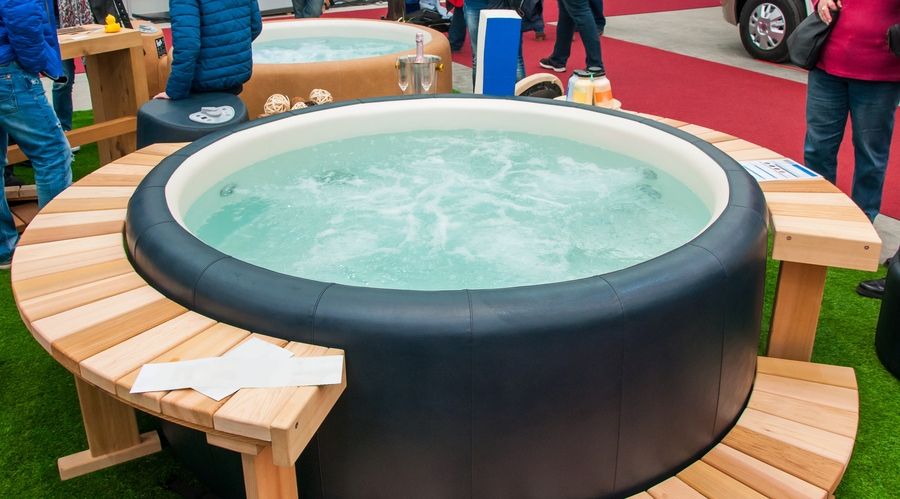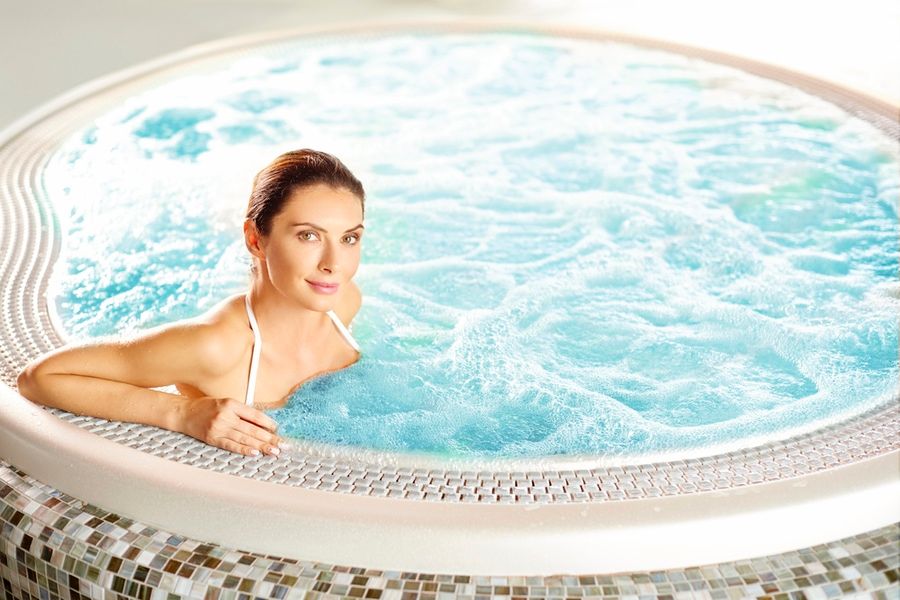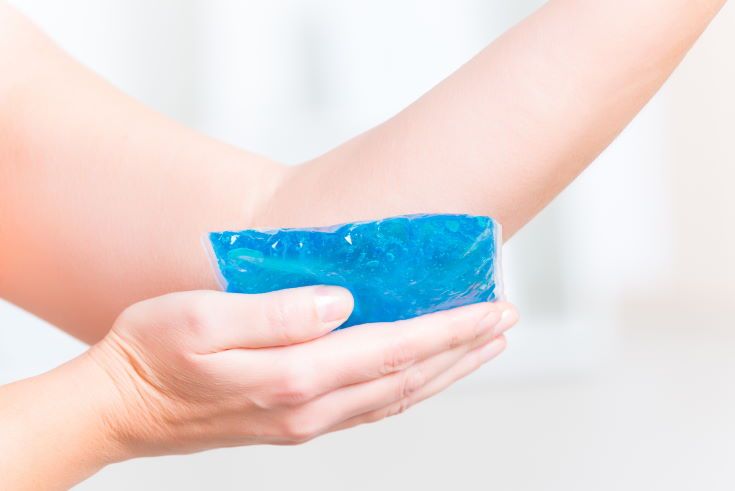Few things can beat the in-home comfort of soaking in the hot tub at the end of a long day. Not only does it help people unwind, but a hot tub can induce a deeper sleep, can help relieve arthritis pain, and it can also lower blood pressure. It’s not just about relaxation, it’s also about health. And while we’re on the topic of health, there is this myth going around that you shouldn’t get in the hot tub after a workout. Does this statement stand? Let’s find out.
Why Own a Hot Tub?
Whether a jacuzzi or hot tub, there are plenty of reasons why a home spa has become more than just a luxury item. With a few hundred dollars, plenty of people can now afford to buy at least an inflatable tub and use it as they please. Since it no longer is a huge investment, people have now become really fond of the idea of owning a hot tub, which can provide multiple benefits, such as:
- Promotes relaxation. One of the best things about owning a hot tub is that you get to combine a bubble message with a thermal comfort that can be felt regardless of the outside temperature. It provides a cozy spot where you can spend time individually, but also a wonderful place to share some laughs with your partner or your family at the end of the day.
- Promotes healing. Is a hot tub good for sore muscles? The combination of features like massage, heat, and buoyancy will help relieve muscle tension. Since heat helps increase blood flow, your muscles will feel less tense, and healing is promoted. The therapeutic massage performed by the function of your tub doesn’t just help one relax the mind, but also the body, pushing endorphin release and naturally making the body get rid of the pain. This is especially so with a saltwater tub. Check out some of the best saltwater hot tubs on our site.
- Promotes weight loss. Studies have revealed the fact that simply soaking in a hot tub can help people lose weight, because of the hot water massage function of a hot tub.
- Helps you sleep better. This shouldn’t be a secret, since there are plenty of people who promote the idea that a nice warm bath is great prior to bedtime. Similarly, the hot water in a home spa can help you fall asleep faster, but also helps you enjoy a deeper and more rejuvenating sleep.
- Lowers blood pressure. According to the New England Journal of Medicine, people who suffer from type 2 diabetes and spend at least 30 minutes in a hot tub each day, over a duration of three weeks can have their blood sugar levels decrease with about 13 percent. If these points have convinced you, then check out some of the best hot tubs on the market, just click here.
Hot Tubs & Workouts: Good or Bad?
The topic itself is surprisingly controversial considering that you know how many benefits hot tubs can bring into a person’s life. So, let us examine the facts. You already know that heat therapy can be very beneficial in increasing blood flow or helping the body relax.
Evidence suggests that both hot and cold water can actually have benefits before and after a workout. If you have a home spa set up, everything indicates that it would be a shame not to use it before and after your workout. According to the New York Times, it seems that the best way for your muscles to recover after exercising it to warm them up.
So, how exactly should you proceed in order to make the best out of your tub when you’re also working out? Here are a couple of suggestions that might help you out:
- There are plenty of pieces of advice out there that will tell you that soaking before a workout has its benefits. Furthermore, the advice states that you should sit in the hot tub for about 10 to 20 minutes before you go on exercising. This is particularly useful because it helps with blood circulation, helping your body warm-up and getting ready for some physical exertion. Those of you who play sports or have been exercising for quite some time now already know that before every game or every workout session, it’s important to perform a few mild exercises that will help warm up the body and get those muscles ready. A hot tub can help you achieve pretty much the same thing: warming up the muscles and getting the blood all warmed up for workouts.
- After you’ve finished your workout session, don’t go directly for the tub. Since exercising gets your body all riled up, it’s important to allow your heart rate to cool down before soaking it in a bath of hot water. Once the heart rate has slowed down, you can get inside the hot tub to start the recovery process (which we’ll get to in a minute).
Good Hot Tub & Workout Integration Processes
Naturally, physical exertion puts your body under a lot of stress, and can really help you stay in shape and maintain optimal health levels. While a hot tub sesh does seem like a good idea after having exercised, it’s important to know that there are DOs and DON’T when it comes to this practice, so carefully consider the following advice and adapt it to best fit your body and your current workout routine:
- While you’re exercising, hydration is a very important part of what keeps your body going. While you’re working out, you will have to drink plenty of water, especially since this physical body stress will cause you to sweat a lot and become dehydrated if you don’t consume any liquid. When you get into the hot tub, drinking water is also very important, so make sure that you have a bottle of water at hand before soaking your body amongst those soothing bubbles. Hot tubs, much like exercising, will make you sweat, so don’t underestimate the importance of drinking plenty of water while you’re doing both.
- Make sure that you’ve given your body a little bit of time to cool down between the end of your workout session and the beginning of your hot tub soak. If your body has a high temperature, with muscles that are all tense and your heart rate is up, the hot water inside the tub will make you feel less comfortable and, instead of helping you relax, it might cause further muscle tension. Try to do a few mild stretches or go for a short walk before you get into the hot tub. It will give your body a chance to return to normal before you soak it in hot water.
- As tempting as all the massage features of a fancy hot tub might sound, it’s best that you stick with a moderate massage setting when getting in the tub after having worked out. There are certain hot tubs out there that offer more intense massages, such as pressurized or deep tissue massage. You want to avoid those because you need to give your muscles time to recover, while pressure might keep them stiff and tense.
Hot Tubs vs. Cold Water Therapies
How come that every time you feel sore, the first thing you do is apply a cold ice pack on the injured or sore area? That’s because the tissue gets inflamed, and cold temperatures are really great at reducing inflammation and taking away some of the pain in the process.
However, this practice has proven itself useful for inflammation, but may not be all that beneficial if your sore muscles are a result of an intense workout. That’s because workout-induced sores are actually a good thing: it means that your tissues are responding to this healthy habit, so soaking your body in cold water may not be good for your physical improvement. That leaves you with one other solution: hot water.
While we can find plenty of side benefits to soaking your body in water after a workout, three of them have actually been tested by multiple athletes and have proven to be the highlights of why hot tubs might just be the next best thing in the post-workout life of a person:
- As we’ve mentioned in the first part of the article, soaking your body in hot water will help muscles recover faster by improving blood circulation. Actually, this is one of the reasons why a lot of people think that soaking in a hot tub before a workout might actually be better than doing it after. When your blood has good circulation, it can distribute the necessary ingredients that your muscles need to heal. So, our suggestion is this: why not try both? Take a shot dip in the hot tub before your workout, finish your exercising sessions, allows your body some time to cool down, then get back into the hot tub and see how you feel.
- When your body is dipped in hot water, your blood vessels expand, which means that your muscles will feel less stiff and sore with each minute that you spend underwater. This can be particularly helpful for people who have intense workout sessions, as these types of high-intensity training sessions often lead to very stiff muscles and an overall state of discomfort and soreness throughout the entire body.
- It’s very normal for a workout session to get you all pumped up, both on a physical as well as on a mental level. Exercising gives you a sort of an adrenaline rush, it makes you happy, gets your juices flowing, and leaves your body ready to run a marathon (unless you don’t normally work out, in which case you’ll feel exhausted after each session). Because a hot tub is designed to be a place of rest and relaxation, it can calm down the spirits and get you in a calmer mood. In other words, hot tubs help the body unwind physically and mentally, which is important because you need to take a break from time to time.
Running vs. Lifting
There are two workouts that deserve a little bit of special attention because you should know how to combine them with a hot tub session in order to get the best results. There are plenty of people who lift weights in order to gain more mass and have good-looking muscles but going in the hot tub after such a workout is a bad idea.
In order for people who lift to actually achieve their goal, it’s important for the blood to stay deep inside the muscles, in order to feel them with oxygen. If you get in the hot tub immediately after lifting, your blood circulation will improve, which can actually draw the blood away from the tissue that needs the oxygen.
For a long time, people believed that cold water might be better as post-workout therapy, but new evidence has surfaced to show that hot water is actually better. It seems that when your muscles are warmed up after exercising, you will recover faster thanks to the improved absorption of loss carbs.
How long you’ll have to wait between the end of your running session on your hot tub time depends on how long you’ve been running, as there is a huge difference to how the body feels after a jog in the park as opposed to having run a marathon. For example, those who finished a marathon should wait between 36 to 48 hours.
Bottom Line
There are so many benefits to a hot tub after a workout. Having a hot tub is more than just having a means to relax. If you’re actually a person who works out on a regular basis, hot tubs can help you make the best out of this healthy experience by aiding you in preparing your body for the workout itself, as well as by helping it heal once your exercise session is over.
Make sure that you follow the guidelines given in this article, because jumping in the hot tub right after a workout is finished might not be all that beneficial. And remember that some of these “rules” need to be adapted to match your situation and your body’s response.








